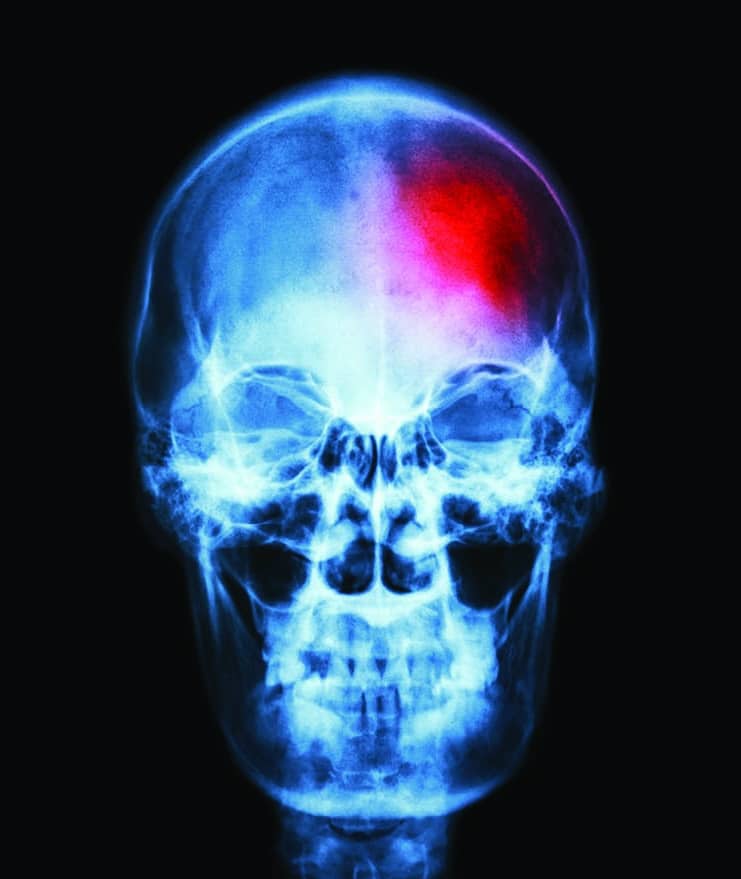 What you don’t know about strokes could be deadly
What you don’t know about strokes could be deadly
True or false? Only people over age 30 can experience a stroke. Stroke is the second-leading cause of disability in the United States. One in nine people will suffer a stroke in his or her lifetime. Every 60 seconds, someone has a stroke. Think you know the answers? How about false, false, false, and false.
Although rare, even infants and children can suffer a stroke. Stroke is the number one cause of disability in the United States. One in six will have a stroke. And every 40 seconds, someone experiences a stroke. So why is it that so many Americans don’t consider stroke a major health concern?
The American Heart Association and the American Stroke Association are working to change that mindset. This month is American Stroke Month, and resources abound to help folks learn the warning signs of stroke and commit to reacting FAST when someone exhibits symptoms.
FAST Signs
Acronyms don’t get any simpler than this, so commit to learning what FAST means when it comes to recognizing a stroke:
- Face drooping
- Arm weakness
- Speech difficulty
- Time to call 9-1-1
A stroke occurs when a blood vessel supplying blood to the brain is either obstructed or ruptures. Within minutes, brain cells begin to die. When a doctor determines a diagnosis of stroke, the treatment is to either remove the blockage or repair the rupture.
Like most major medical concerns, the faster you receive medical treatment for stroke, the better your chances for a good prognosis. You can identify area hospitals that are certified stroke centers by entering your ZIP code at StrokeCenter.org. What’s most important to note: strokes are largely preventable and treatable.
Preventing a Stroke
Risk factors of stroke can be heredity or a result of lifestyle choices. Some strokes are a function of natural process or can result from trauma or injury. You can do your part by:
- controlling your blood pressure
- quitting smoking
- monitoring your diabetes
- managing conditions such as artery diseases, atrial fibrillation, and high blood cholesterol
- eating a heart-healthy diet
- not abusing alcohol or drugs
- keeping excess pounds off
- getting 30 minutes of activity nearly every day
 Your best ally is a trusted medical partner who will monitor your chronic conditions and speak frankly with you about your risk factors. If you’re overweight and sedentary, your doctor should suggest ways to lose excess pounds and recommend steps for improving your fitness.
Your best ally is a trusted medical partner who will monitor your chronic conditions and speak frankly with you about your risk factors. If you’re overweight and sedentary, your doctor should suggest ways to lose excess pounds and recommend steps for improving your fitness.
Learn more about decreasing your risk of stroke and what to do if you suspect you or a loved one is having a stroke at StrokeAssociation.org. You can also find invaluable resources online such as support groups in your area and a caregiver’s guide to stroke as well as articles by stroke survivors.
Women at Risk
Stroke is neither gender nor race specific, but women can have higher risk factors if they:
- suffer migraines with visual disturbances such as flashing dots or blind spots
- use birth control pills
- have a history of preeclampsia/eclampsia
- have chronic hypertension
- use hormone therapy
- have an autoimmune disorder such as lupus or diabetes
- experience clotting disorders (such as deep vein thrombosis) or have a history of miscarriages
Talk to your doctor if you have any of these conditions and know your risk of stroke. (Source: StrokeAssociation.org)
Different Strokes for Some Folks
Ken and his wife, Shirley, traveled from Houston to the Dallas area to spend a relaxing weekend with their son’s family, punctuated by a round of golf between Ken and his son. After golfing, Ken joined the family outdoors to watch the grandkids play basketball. His daughter-in-law teased him about his score and he turned to her and said, “We didn’t play golf today.”
After some anxious looks were volleyed about, more questions about how Ken might have spent his day revealed he had no memory of the past few hours. His wife and son then took him to a nearby hospital. Physicians there determined Ken had suffered a transient ischemic attack (TIA) or “mini-stroke” as they’re often called. The main difference between a stroke and a TIA is the blood clot blocking an artery is temporary or transient. Symptoms occur rapidly, last a relatively short time, and cause no permanent injury to the brain.
Over the next few weeks, Ken’s memory of his golf outing returned in bursts. “There are still a few holes I can’t remember, but most of it, even years later, I can still recall,” he says. He also had no recurring issues related to the incident; a TIA should be considered a warning sign, as about one-third of those who experience a TIA will have a stroke within the following year.
An emergency care physician should evaluate any signs of a stroke immediately. Don’t wait to see if symptoms subside.
By Pamela Hammonds










